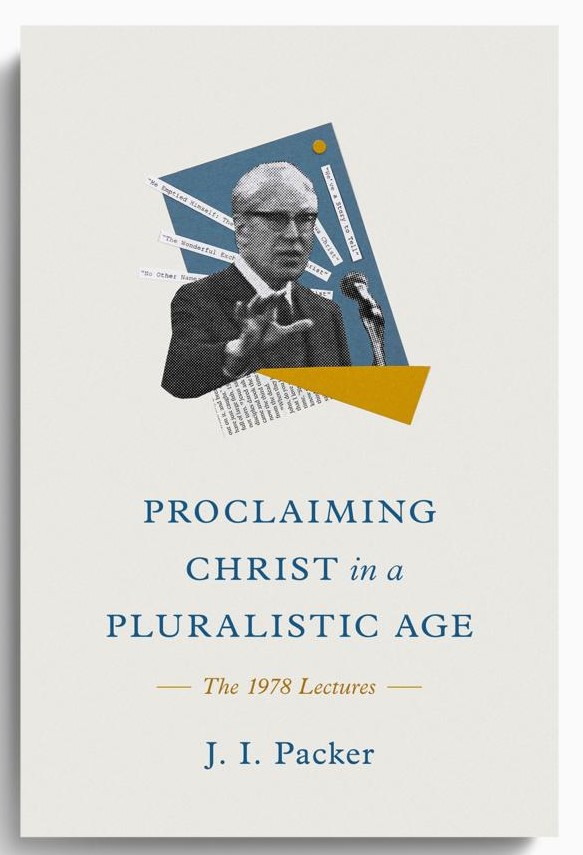
J. I. Packer
Reviewed by: Shane Lems
Proclaiming Christ in a Pluralistic Age: The 1978 Lectures, by J. I. Packer. Crossway, 2024. Hardcover, 168 pages, $23.49. Reviewed by OP pastor Shane P. Lems.
In 1978, five years after publishing Knowing God, J. I. Packer gave a series of lectures at Reformed Bible College in Grand Rapids, Michigan. Later, in 1978, Packer slightly revised these lectures and gave them at Moore Theological College in Sydney, Australia. These lectures have now been edited and published by Crossway with the title Proclaiming Christ in a Pluralistic Age. The book includes a short biographical introduction about Packer’s life and ministry as well as general and Scripture indexes.
Proclaiming Christ is an accurate title. This book is about the person and work of Christ and what it means to preach the truth that salvation is found in Christ alone. More specifically, the first part of this book is Packer’s exposition and application of 1 Corinthians 1:23–24. In this section, Packer discusses the contemporary reality that the gospel is still a stumbling block to some and folly to others. Packer then explains how the gospel is a story: “This is a narrative. This is history. This is a proclamation of what God has done” (18). Packer also mentions various strands in the story of the gospel, for example, kingdom, mediation, and victory.
The next two parts of the book include explanations of the humanity and divinity of Christ. Packer uses the gospels to show who Jesus is: God’s Son, our Savior, the Lord. Packer also explains the reality of the incarnation, that God became flesh and dwelt among us. The fourth part of this book covers the topic of Christ’s work as Savior. Here Packer points to Scripture’s explanation of Christ’s death as a sacrifice, ransom, and propitiation. Packer defends the penal substitution of Christ and its importance in the Christian faith. He says that “penal substitution is in the very heart of the gospel, for it speaks directly to the very heart of human need” (101).
The final part of Proclaiming Christ is all about the uniqueness of Christ and the importance of the cross. Packer notes that “[Christ] is the sufficient and adequate Savior and deliverer in all human need and extremity” (130). In this section, Packer explains the purpose of the cross, the truth of the cross, the preaching of the cross, the need for the cross, and other aspects of the cross. He then refutes various forms of universalism and ends with a positive emphasis on the cross and evangelism.
Proclaiming Christ is a straightforward presentation of the person and work of Christ from a historic Christian and Reformed point of view. It also explains some aspects of what it means to preach Christ and share the gospel. To be sure, some parts of this book are dated. For example, Packer spends time talking about the Kenosis theory (68–70). He also interacts with some 1970s forms of humanism and several 1970s views of universalism (xxiii, 113). Although it is understandable why Packer would address such issues in these 1978 lectures, it does slightly date parts of the book.
Proclaiming Christ doesn’t necessarily fill a void in Christian literature, as there are other good Reformed resources that also rightly explain the person and work of Christ in a biblical manner. However, readers who appreciate Packer’s style or who want to hear more about these great gospel truths will profit from this book.
August 24, 2025
August 17, 2025
Reformed Covenant Theology: A Systematic Introduction
August 10, 2025
August 03, 2025
July 27, 2025
July 20, 2025
July 13, 2025
© 2025 The Orthodox Presbyterian Church